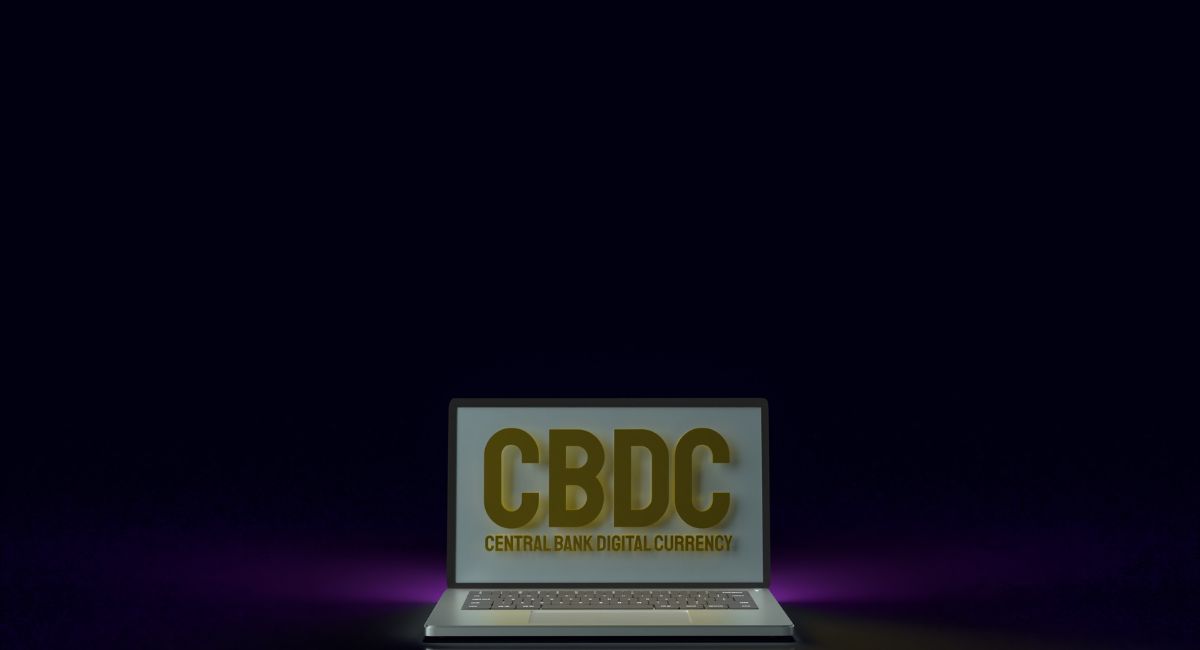CBDCs and Programmable Money: Shaping the Amazing Future of Digital Payments In 2024
As the world increasingly shifts towards digital finance, Central Bank Digital Currencies (CBDCs) and programmable money are becoming crucial topics. These innovations promise to change how we conduct transactions, manage money, and interact with financial systems. In this article, we will explore CBDCs and programmable money, their impacts on financial systems, and the challenges they face today.
Key Takeaways
- CBDCs are digital forms of a country’s official currency, managed by central banks.
- Programmable money allows for automatic transactions based on set rules, enhancing efficiency.
- CBDCs can lower costs by removing middlemen in transactions, making payments cheaper.
- Different countries are taking unique paths in adopting CBDCs, affecting global payment systems.
- The rise of CBDCs could change monetary policies, giving central banks new tools for economic management.
Understanding CBDCs and Programmable Money
Defining CBDCs and Their Role
CBDCs, or Central Bank Digital Currencies, are a country’s official money in digital form. They are issued and controlled by a nation’s central bank. Unlike cash, CBDCs exist only online and are considered legal tender. They are different from cryptocurrencies like Bitcoin because they are backed by a central authority, which helps keep them stable.
The Concept of Programmable Money
Programmable money refers to digital currency that can be programmed to perform specific functions automatically. This means that transactions can be set to happen under certain conditions. For example, a payment could be made only if a product is delivered. This feature can make transactions faster and more efficient.
Key Differences Between CBDCs and Cryptocurrencies
| Feature | CBDCs | Cryptocurrencies |
|---|---|---|
| Issuer | Central Bank | Decentralized (e.g., Bitcoin) |
| Stability | Backed by government | Highly volatile |
| Regulation | Heavily regulated | Often unregulated |
| Accessibility | Available to everyone | Limited access in some cases |
In summary, CBDCs and programmable money are changing how we think about money and payments. They offer new ways to make transactions easier and more secure.
The rise of CBDCs could lead to instant and cost-effective transactions, enhancing financial inclusion and increasing transparency in the financial system.
The Impact of CBDCs on Financial Systems
Enhancing Payment Efficiency
CBDCs can significantly improve payment efficiency by allowing direct transactions between users. This reduces the need for intermediaries, which often slow down the process and add extra costs. With CBDCs, payments can be made almost instantly, making financial transactions smoother and faster.
Reducing Transaction Costs
One of the main advantages of CBDCs is their ability to lower transaction costs. Traditional systems often involve high fees for cross-border payments and other services. By using CBDCs, these costs can be minimized, making it cheaper for individuals and businesses to send and receive money. Here’s a quick look at how CBDCs can cut costs:
- Lower fees for transactions
- Fewer intermediaries involved
- Faster processing times
Improving Security and Transparency
CBDCs also enhance security and transparency in financial systems. Since they are issued by central banks, they come with built-in protections against fraud and theft. Additionally, the digital nature of CBDCs allows for better tracking of transactions, which can help prevent illegal activities.
The introduction of CBDCs marks a significant shift in how we think about money and payments, potentially leading to a more inclusive financial system.
In summary, CBDCs have the potential to reshape financial systems by enhancing efficiency, reducing costs, and improving security. As countries explore the implementation of CBDCs, the financial landscape may undergo a major transformation, paving the way for a more connected and efficient global economy.
Key Considerations
- Technology infrastructure: Investment in technology is crucial for successful CBDC implementation.
- Central bank coordination: Collaboration among central banks is essential for global CBDC integration.
- Regulatory frameworks: Clear regulations are needed to ensure consumer protection and financial stability.
Overall, the impact of CBDCs on financial systems could be profound, leading to a more efficient and secure way of handling money.
Global Adoption and Regulatory Challenges
Different Approaches by Governments
Countries around the world are taking various paths when it comes to adopting Central Bank Digital Currencies (CBDCs). Some nations are moving quickly to implement them, while others are still in the research phase. This diversity in approaches can lead to confusion and inconsistency. Here are some key points to consider:
- Speed of Adoption: Some countries are launching pilot programs, while others are still debating the need for CBDCs.
- Regulatory Frameworks: Different nations have different rules, which can complicate international transactions.
- Public Opinion: Citizens’ views on CBDCs can influence government decisions, making public trust essential.
Regulatory Frameworks and Compliance
Creating effective regulations for CBDCs is crucial for their success. Governments need to ensure that these digital currencies are safe and secure. Here are some important aspects:
- Risk Management: Central banks must develop strategies to handle risks like cyber threats and technological failures.
- Privacy Protections: Strong privacy measures are necessary to maintain public trust in CBDCs.
- Legal Considerations: Laws must be updated to address the unique challenges posed by programmable money.
Balancing Privacy and Data Collection
As CBDCs become more popular, the balance between privacy and data collection becomes increasingly important. Finding this balance is essential for user acceptance. Here are some considerations:
- User Privacy: Protecting individual data is crucial to gain public trust.
- Data Usage: Clear guidelines on how data will be used can help alleviate concerns.
- Transparency: Open communication about data practices can foster trust among users.
In summary, the global landscape for CBDCs is complex and ever-changing. Governments must navigate these challenges carefully to ensure that CBDCs can be adopted successfully and responsibly.
| Aspect | Description |
|---|---|
| Speed of Adoption | Varies by country |
| Regulatory Frameworks | Different rules for each nation |
| Public Opinion | Influences government decisions |
Technological Innovations Driven by CBDCs
Advancements in Blockchain and DLT
The rise of Central Bank Digital Currencies (CBDCs) is closely linked to the rapid rise of blockchain technology. This technology is changing how transactions are done by making them more secure and efficient. With CBDCs, we can expect:
- Faster transaction speeds
- Lower costs for cross-border payments
- Enhanced security against fraud
Role of AI in Programmable Money
Artificial Intelligence (AI) is set to play a significant role in the development of programmable money. This means that money can be programmed to perform specific tasks automatically. Some potential uses include:
- Automating payments based on conditions
- Enhancing fraud detection
- Personalizing financial services for users
Development of Interoperability Standards
For CBDCs to work well, they need to communicate with existing financial systems. This requires the creation of interoperability standards. Key points include:
- Ensuring different CBDCs can work together
- Allowing seamless transactions across borders
- Promoting collaboration between banks and tech companies
The integration of CBDCs into our financial systems could lead to a more efficient and secure way of handling money, transforming how we think about payments and transactions.
CBDCs and Monetary Policy
Transforming Central Bank Strategies
The rise of Central Bank Digital Currencies (CBDCs) is changing how central banks operate. This shift allows for more direct control over the economy. With CBDCs, central banks can respond to economic changes quickly, making adjustments to policies in real time. This means they can better manage things like inflation and employment rates.
Interest Rate Management
CBDCs also change how interest rates are managed. Here are some key points:
- Central banks can set interest rates more accurately.
- They can use CBDCs to implement new tools for managing rates.
- This flexibility helps in responding to economic conditions faster.
Programmable Money in Policy Implementation
Programmable money, a feature of CBDCs, allows for automated policy actions. This means that central banks can set rules that automatically adjust based on certain conditions. For example:
- If inflation rises, interest rates can automatically increase.
- If unemployment goes up, funds can be directed to support job creation.
- Smart contracts can streamline the execution of monetary policies.
The introduction of CBDCs represents a significant change in how monetary policy is conducted, making it more efficient and responsive to current economic needs.
In summary, CBDCs are not just a new form of money; they are a tool that can reshape how central banks manage the economy, making it more adaptable and efficient. This evolution is crucial as the world moves towards a more digital financial landscape.
Highlight: U.S. lawmakers are excited about cryptocurrency and blockchain.
Geopolitical Implications of CBDCs
New Geopolitical Alignments
The rise of Central Bank Digital Currencies (CBDCs) is reshaping global power dynamics. Countries are exploring CBDCs to enhance their economic sovereignty and reduce reliance on traditional currencies. This shift could lead to new alliances as nations seek to strengthen their financial systems against external pressures.
Techno-Nationalism and Digitalization
As nations adopt CBDCs, techno-nationalism is becoming more prominent. Countries are prioritizing their digital currencies to secure economic advantages and protect their interests. This trend may lead to increased competition and tensions among nations, as each strives to establish its digital currency as a global standard.
Global Diversification of Payment Systems
The introduction of CBDCs could diversify global payment systems. This diversification may reduce the dominance of the US dollar, especially with initiatives like the BRICS decentralized financial framework to rival the US dollar. Countries involved in this framework aim to enhance trade stability and address economic challenges collectively.
The emergence of CBDCs represents a significant shift in how countries interact economically, potentially leading to a more multipolar world.
Summary of Geopolitical Implications
| Implication | Description |
|---|---|
| New Alliances | Countries may form new partnerships based on shared CBDC interests. |
| Increased Competition | Nations will compete to establish their CBDCs as global standards. |
| Reduced Dollar Dominance | Initiatives like BRICS aim to lessen reliance on the US dollar. |
Future Prospects of CBDCs and Programmable Money
Potential Benefits and Challenges
The rise of CBDCs and programmable money brings both exciting opportunities and significant hurdles. These digital currencies could revolutionize how we handle money. Some potential benefits include:
- Lower transaction costs: By cutting out middlemen, CBDCs can make payments cheaper.
- Faster transactions: Direct peer-to-peer transfers can speed up payment processes.
- Increased financial inclusion: More people could access banking services through digital currencies.
However, challenges remain:
- Technological infrastructure: Countries need to invest in technology to support CBDCs.
- Regulatory frameworks: Clear rules are essential to ensure safety and stability.
- Market acceptance: Gaining trust from the public is crucial for widespread use.
Market Acceptance and Consumer Trust
For CBDCs to succeed, they must be accepted by both businesses and consumers. Building trust is key. Here are some ways to foster acceptance:
- Education: Informing the public about the benefits of CBDCs.
- Pilot programs: Testing CBDCs in small areas to gather feedback.
- Collaboration: Working with financial institutions to ensure smooth integration.
The Role of Fintech and Traditional Banks
Fintech companies and traditional banks will play a vital role in the future of CBDCs. They can:
- Innovate: Create new services that utilize CBDCs.
- Partner: Collaborate to enhance the user experience.
- Adapt: Adjust their business models to incorporate digital currencies.
As we look ahead, the integration of CBDCs into our financial systems could lead to a more efficient and inclusive economy. The journey will require careful planning and cooperation among all stakeholders.
Conclusion
In conclusion, the rise of Central Bank Digital Currencies (CBDCs) and programmable money is set to change how we think about and use money. As more people and businesses start using these digital currencies, we can expect faster and safer transactions. CBDCs can help reduce costs and make payments easier, especially for international transactions. However, there are still questions about privacy and how much data consumers are willing to share. As governments and banks work together to create these new systems, it’s important to find a balance that keeps users safe while also encouraging innovation. The future of money is digital, and with careful planning, CBDCs could lead to a more efficient and inclusive financial world.
Frequently Asked Questions
What are CBDCs?
CBDCs, or Central Bank Digital Currencies, are digital forms of a country’s official money. They are created and managed by a country’s central bank.
How is programmable money different from regular money?
Programmable money can have rules built into it, allowing it to automatically perform certain actions, like making payments when specific conditions are met.
Can CBDCs replace cash?
CBDCs are meant to work alongside cash, not replace it. They provide a digital option for transactions while keeping physical cash available.
What benefits do CBDCs offer?
CBDCs can make payments faster and cheaper, improve security, and help governments better manage their economies.
How do CBDCs affect privacy?
CBDCs can collect data on transactions, which raises questions about privacy. Different countries have different rules on how much data can be collected.
Are CBDCs the same as cryptocurrencies?
No, CBDCs are issued by central banks and are stable, while cryptocurrencies like Bitcoin are decentralized and can be very volatile.
Stay informed with daily updates from Blockchain Magazine on Google News. Click here to follow us and mark as favorite: [Blockchain Magazine on Google News].
Get Blockchain Insights In Inbox
Stay ahead of the curve with expert analysis and market updates.
latest from tech
Disclaimer: Any post shared by a third-party agency are sponsored and Blockchain Magazine has no views on any such posts. The views and opinions expressed in this post are those of the clients and do not necessarily reflect the official policy or position of Blockchain Magazine. The information provided in this post is for informational purposes only and should not be considered as financial, investment, or professional advice. Blockchain Magazine does not endorse or promote any specific products, services, or companies mentioned in this posts. Readers are encouraged to conduct their own research and consult with a qualified professional before making any financial decisions. The featured image used is just a creative depiction of the title and it does not intend to hurt sentiments of any person or institution. If it hurts anyone sentiments, please do not hesitate to reach out to Blockchain Magazine.

 Bitcoin
Bitcoin  Ethereum
Ethereum  XRP
XRP  Tether
Tether  Solana
Solana  USDC
USDC  Dogecoin
Dogecoin  Cardano
Cardano  Lido Staked Ether
Lido Staked Ether  TRON
TRON  Chainlink
Chainlink  Avalanche
Avalanche  Wrapped stETH
Wrapped stETH  Wrapped Bitcoin
Wrapped Bitcoin  Stellar
Stellar  Sui
Sui  Toncoin
Toncoin  Hedera
Hedera  Shiba Inu
Shiba Inu  WETH
WETH  Litecoin
Litecoin  Polkadot
Polkadot  Hyperliquid
Hyperliquid  LEO Token
LEO Token  Bitcoin Cash
Bitcoin Cash  Bitget Token
Bitget Token  Uniswap
Uniswap  Wrapped eETH
Wrapped eETH  USDS
USDS  Ethena USDe
Ethena USDe  Pepe
Pepe  NEAR Protocol
NEAR Protocol  Official Trump
Official Trump  Aave
Aave  MANTRA
MANTRA  Ondo
Ondo  Aptos
Aptos  Internet Computer
Internet Computer  Monero
Monero  Ethereum Classic
Ethereum Classic  Mantle
Mantle  WhiteBIT Coin
WhiteBIT Coin  Bittensor
Bittensor  Cronos
Cronos  POL (ex-MATIC)
POL (ex-MATIC)  Dai
Dai  OKB
OKB 




